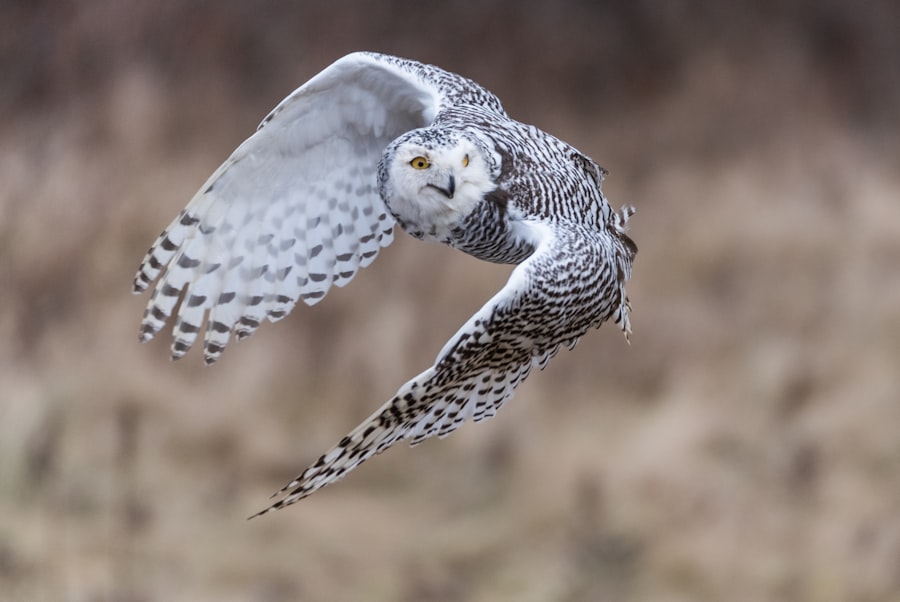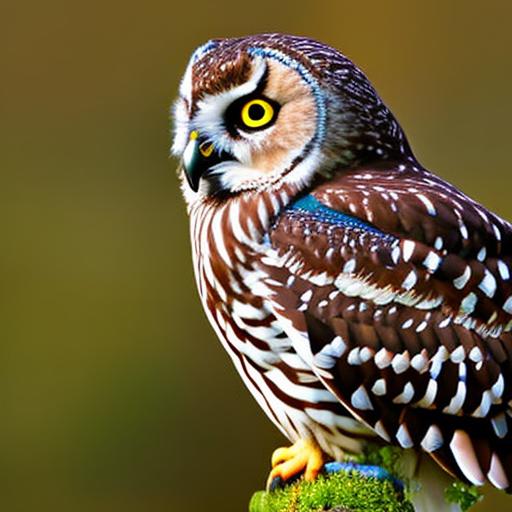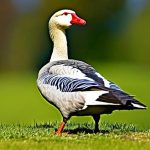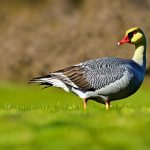Geese invading properties and causing damage has become an increasing problem in many areas. These birds are known for their aggressive behavior and can quickly become a nuisance. One method that has been used to deter geese from invading properties is the use of fake owls. These realistic-looking decoys are designed to scare away geese and prevent them from causing damage. In this article, we will explore the effectiveness of fake owls as a goose deterrent and discuss other methods that can be used in conjunction with them.
Key Takeaways
- Fake owls can be used as a deterrent for geese.
- Geese can be problematic due to their aggressive behavior and droppings.
- Fake owls can be effective in deterring geese, but their effectiveness may vary.
- Factors to consider when choosing a fake owl include size, color, and material.
- Proper placement and positioning of a fake owl is important for maximum effectiveness.
The behavior of geese and why they can be problematic
Geese are social animals that often travel in large flocks. They are known for their territorial behavior and can become aggressive when they feel threatened or when they are protecting their nests. This behavior can be problematic when geese invade properties, as they can cause damage to lawns, gardens, and buildings.
One of the main issues with geese is their droppings. Geese produce a large amount of waste, which can quickly accumulate on lawns and walkways. Not only is this unsightly, but it can also pose health risks to humans and pets. In addition to their droppings, geese can also cause damage to lawns by eating grass and digging up the ground in search of insects.
Geese are also known for their feeding habits, which can be destructive to gardens and crops. They will eat a variety of plants, including vegetables, flowers, and grasses. This can be frustrating for homeowners who have put time and effort into maintaining their gardens, only to have them destroyed by geese.
Understanding the effectiveness of fake owls as a goose repellent
Fake owls work as a deterrent for geese by capitalizing on their natural fear of predators. Geese are instinctively wary of birds of prey, such as owls, hawks, and eagles. When they see a fake owl, they perceive it as a potential threat and will often avoid the area.
Several studies have been conducted to test the effectiveness of fake owls as a goose deterrent. One study published in the Journal of Wildlife Management found that the presence of a fake owl reduced the number of geese on a golf course by 75%. Another study conducted by the University of Nebraska-Lincoln found that the use of fake owls reduced goose damage to turfgrass by 80%.
These studies suggest that fake owls can be an effective tool for deterring geese and preventing damage to properties. However, it is important to note that their effectiveness may vary depending on the specific circumstances and the behavior of the geese in the area.
Factors to consider when choosing a fake owl for goose control
When choosing a fake owl for goose control, there are several factors to consider. The first is size. It is important to choose a fake owl that is large enough to be visible to geese from a distance. A small, inconspicuous owl may not be as effective in deterring geese.
The material of the fake owl is also important. It should be made of durable materials that can withstand outdoor conditions, such as rain, wind, and sunlight. Some fake owls are made of plastic, while others are made of more realistic materials, such as feathers or fabric. The choice of material will depend on personal preference and budget.
The design of the fake owl can also impact its effectiveness. Some fake owls have moving parts, such as rotating heads or flapping wings, which can make them appear more realistic to geese. Others have reflective eyes or other features that can enhance their deterrent effect.
How to properly place and position a fake owl to deter geese
Proper placement and positioning of the fake owl is crucial for its effectiveness in deterring geese. The fake owl should be placed in a visible location, where it can be easily seen by geese from different angles. It should be positioned in a way that mimics the natural behavior of an owl, such as perched on a tree branch or fence post.
The height at which the fake owl is placed can also impact its effectiveness. It should be positioned at eye level for geese, which is typically around 2 to 3 feet off the ground. This will make it more visible to the geese and increase its deterrent effect.
It is also important to regularly move the fake owl to different locations. Geese can become accustomed to the presence of a stationary object and may eventually ignore it. By moving the fake owl every few days, its effectiveness can be maintained.
Other methods for keeping geese away from your property

While fake owls can be effective in deterring geese, they should be used in conjunction with other methods for optimal results. One method that can be used in combination with fake owls is the use of sound devices. These devices emit loud noises or predator calls that can scare away geese. However, it is important to note that some sound devices may also disturb neighbors or other wildlife.
Another method for keeping geese away from your property is the use of fencing. Fencing can create a physical barrier that prevents geese from accessing certain areas. However, it is important to choose a fence that is tall enough to deter geese, as they are capable of flying over low fences.
The importance of rotating fake owls to maintain their effectiveness
As mentioned earlier, it is important to regularly rotate the position of the fake owl to maintain its effectiveness. Geese can become accustomed to the presence of a stationary object and may eventually ignore it. By moving the fake owl every few days, its deterrent effect can be maintained.
It is recommended to rotate the position of the fake owl at least once a week. This will prevent geese from becoming familiar with its presence and reduce the likelihood of them ignoring it.
Potential drawbacks of using fake owls as a goose deterrent
While fake owls can be an effective tool for deterring geese, there are some potential drawbacks to consider. One drawback is that geese can become accustomed to the presence of a fake owl over time. They may eventually realize that the owl is not a real threat and ignore it.
To mitigate this drawback, it is important to regularly rotate the position of the fake owl, as mentioned earlier. This will prevent geese from becoming familiar with its presence and reduce the likelihood of them ignoring it.
Another potential drawback is that fake owls may not be effective in all situations. Geese are intelligent animals and can quickly adapt to new stimuli. If they have had previous negative experiences with fake owls or have learned that they are not a threat, they may be less likely to be deterred by them.
Tips for maintaining and cleaning your fake owl to ensure its longevity
To ensure the longevity of your fake owl, it is important to properly maintain and clean it. Regularly inspect the fake owl for any signs of damage, such as cracks or fading. If any damage is found, repair or replace the fake owl as necessary.
Cleaning the fake owl is also important to maintain its effectiveness. Use a mild detergent and water to clean the surface of the fake owl, removing any dirt or debris. Avoid using harsh chemicals or abrasive materials, as these can damage the surface of the fake owl.
During the off-season, when the fake owl is not in use, it is important to store it properly. Keep it in a cool, dry place away from direct sunlight and extreme temperatures. This will help prevent damage and ensure its longevity.
Conclusion and final thoughts on using fake owls to keep geese away
In conclusion, fake owls can be an effective tool for deterring geese and preventing damage to properties. Their realistic appearance and predator-like behavior can scare away geese and prevent them from causing damage. However, it is important to use fake owls in conjunction with other methods, such as sound devices or fencing, for optimal results.
Regularly rotating the position of the fake owl and properly maintaining and cleaning it are also important for its effectiveness and longevity. By following these tips and considering the factors mentioned earlier, homeowners can successfully deter geese from their properties and prevent damage.
If you’re looking for effective ways to keep geese away from your property, you may have considered using a fake owl as a deterrent. While it may seem like a simple solution, it’s important to understand its effectiveness and limitations. In a related article on Poultry Wizard, you can learn more about whether a fake owl can truly keep geese away. This informative piece explores the behavior of geese and provides insights into alternative methods that may be more successful in deterring them. Check out the article here to make an informed decision on protecting your property from geese intrusion.
FAQs
What is a fake owl?
A fake owl is a decoy that is designed to look like a real owl. It is often used to scare away birds and other animals that may be causing problems in a particular area.
Will a fake owl keep geese away?
It is possible that a fake owl may keep geese away, but it is not guaranteed. Geese are intelligent animals and may quickly realize that the owl is not real. Additionally, if the geese are used to human activity in the area, they may not be scared off by a fake owl.
How does a fake owl work?
A fake owl works by mimicking the appearance of a real owl, which is a natural predator of many birds and small animals. The idea is that the presence of the fake owl will scare away the geese and other birds, making them feel like they are in danger.
Are there any other methods for keeping geese away?
Yes, there are several other methods for keeping geese away. These include using noise deterrents, such as loudspeakers or sirens, using visual deterrents, such as reflective tape or balloons, and using physical barriers, such as fences or netting.
Are fake owls effective for other types of birds?
Yes, fake owls can be effective for scaring away other types of birds, such as pigeons, crows, and seagulls. However, as with geese, the effectiveness of the fake owl may depend on the intelligence of the birds and their familiarity with the area.
Meet Walter, the feathered-friend fanatic of Florida! Nestled in the sunshine state, Walter struts through life with his feathered companions, clucking his way to happiness. With a coop that’s fancier than a five-star hotel, he’s the Don Juan of the chicken world. When he’s not teaching his hens to do the cha-cha, you’ll find him in a heated debate with his prized rooster, Sir Clucks-a-Lot. Walter’s poultry passion is no yolk; he’s the sunny-side-up guy you never knew you needed in your flock of friends!







